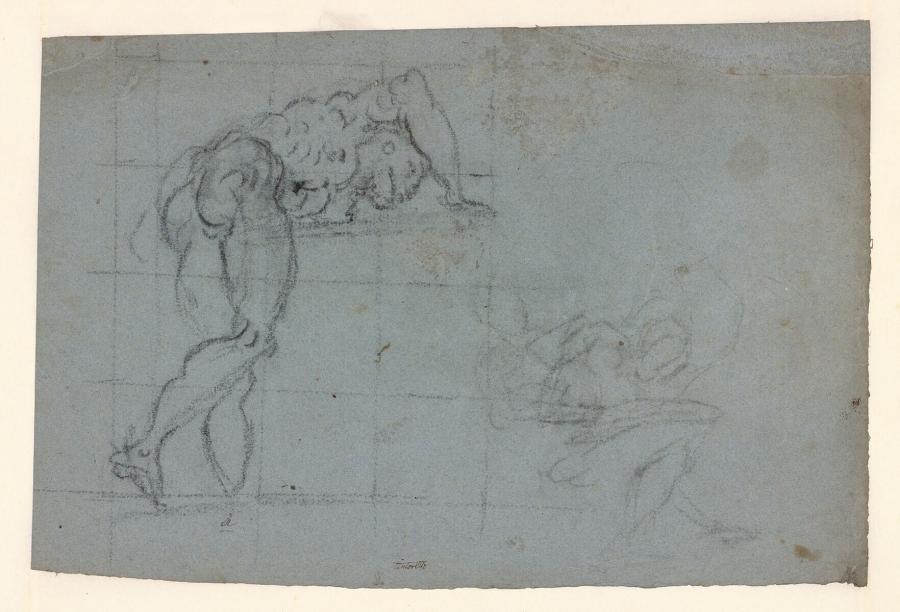Specifications
| Title | Study of a Male Nude Bending Forward, to the Right, and a Seated Figure |
|---|---|
| Material and technique | Black chalk, squared, on blue paper |
| Object type |
Drawing
> Two-dimensional object
> Art object
|
| Location | This object is in storage |
| Dimensions |
Height 280 mm Width 417 mm |
|---|---|
| Artists |
Draughtsman:
Jacopo Tintoretto (Jacopo Comin, Jacopo Robusti)
|
| Accession number | I 83 recto (PK) |
| Credits | Loan Stichting Museum Boijmans Van Beuningen (former Koenigs collection), 1940 |
| Department | Drawings & Prints |
| Acquisition date | 1940 |
| Creation date | in circa 1580 |
| Watermark | Anchor within a circle with a six-pointed star above (62 x 39 mm, on P7 of 9P, vV). [see image] |
| Inscriptions | 'tintoretto' (left of centre below, pen and brown ink) |
| Collector | Collector / Franz Koenigs |
| Mark | F.W. Koenigs (L.1023a) |
| Provenance | Francesco II d'Adda, conte di Sale, Milan (-1641), album of drawings from c. 1630-40; - ; Franz W. Koenigs (1881-1941, L.1023a), Haarlem, acquired in 1926; D.G. van Beuningen (1877-1955), Rotterdam, acquired with the Koenigs Collection in 1940 and donated to Stichting Museum Boijmans Van Beuningen |
| Exhibitions | none |
| Research |
Show research Italian Drawings 1400-1600 |
| Literature | Tietze/Tietze-Conrat 1944, no. 1662 (Jacopo); Rossi 1975, p. 64 (rejected attr.); Rearick 2001, pp. 228, 259 (Jacopo); Rossi 2007, pp. 89, 109, no. 65, fig. 42 (Domenico); Marciari 2018, pp. 112-113 n. 30 |
| Material | |
| Object | |
| Technique |
Squared
> Squaring
> Drawing technique
> Technique
> Material and technique
Squared
> Squaring
> Drawing technique
> Technique
> Material and technique
|
| Geographical origin | Italy > Southern Europe > Europe |
| Place of manufacture | Venice > Veneto region > Italy > Southern Europe > Europe |
Do you have corrections or additional information about this work? Please, send us a message

























